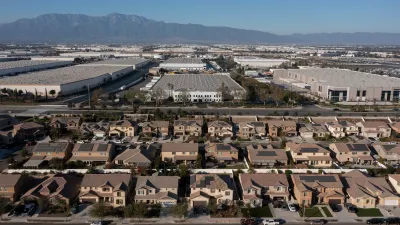Schools can do more to reduce the environmental threat posed by idling cars during drop-off or pick-up. School districts could also improve their buses with that aim in mind.

While student safety is of paramount concern to parents and school districts, protocols haven't mitigated the air quality threat of idling cars and buses. Angie Schmitt writes, "Every morning and afternoon at schools around the country, pick-up and drop-off times are free-for-alls of mindless idling, with tailpipes spitting poisonous chemicals into the air children breathe."
That environment can exacerbate or even cause chronic respiratory conditions like asthma. "Asthma is the most common chronic disease among children. Car exhaust can trigger attacks and may cause asthma itself, and schools are where children tend to be especially exposed."
The article cites four ways schools could encourage cleaner air as students arrive and leave.
- Choose school sites and build street infrastructure with active transportation—walking and biking—in mind.
- Educate parents about the issue; encourage them to turn off engines while they wait
- Keep school bus idling to a minimum
- Retrofit school buses with cleaner engines
FULL STORY: 4 Things Schools Can Do to Reduce the Asthma Threat From Idling Cars

Planetizen Federal Action Tracker
A weekly monitor of how Trump’s orders and actions are impacting planners and planning in America.

Restaurant Patios Were a Pandemic Win — Why Were They so Hard to Keep?
Social distancing requirements and changes in travel patterns prompted cities to pilot new uses for street and sidewalk space. Then it got complicated.

Map: Where Senate Republicans Want to Sell Your Public Lands
For public land advocates, the Senate Republicans’ proposal to sell millions of acres of public land in the West is “the biggest fight of their careers.”

Orange County, Florida Adopts Largest US “Sprawl Repair” Code
The ‘Orange Code’ seeks to rectify decades of sprawl-inducing, car-oriented development.

Maui's Vacation Rental Debate Turns Ugly
Verbal attacks, misinformation campaigns and fistfights plague a high-stakes debate to convert thousands of vacation rentals into long-term housing.

San Francisco Suspends Traffic Calming Amidst Record Deaths
Citing “a challenging fiscal landscape,” the city will cease the program on the heels of 42 traffic deaths, including 24 pedestrians.
Urban Design for Planners 1: Software Tools
This six-course series explores essential urban design concepts using open source software and equips planners with the tools they need to participate fully in the urban design process.
Planning for Universal Design
Learn the tools for implementing Universal Design in planning regulations.
Heyer Gruel & Associates PA
JM Goldson LLC
Custer County Colorado
City of Camden Redevelopment Agency
City of Astoria
Transportation Research & Education Center (TREC) at Portland State University
Camden Redevelopment Agency
City of Claremont
Municipality of Princeton (NJ)





























